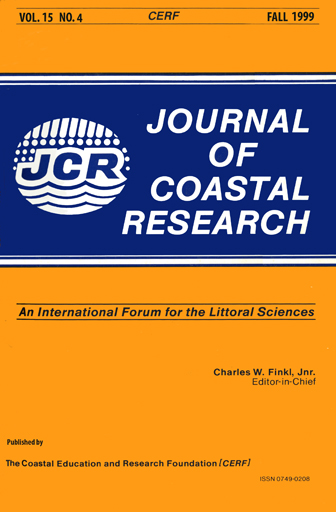Geochemistry of Florida Bay Sediments: Nutrient History at Five Sites in Eastern and Central Florida Bay
Keywords:
Organic carbon in sediments, total nitrogen in sediments, total phosphorus in sediments, ecosystem history, The Everglades, Everglades National Park, carbon isotopes, nitrogen isotopes.Abstract
Recent seagrass dieoff and massive microalgal blooms have focused attention on the health of the Florida Bay ecosystem. Changes in nutrient input and the nutrient dynamics of Florida Bay are hypothesized to be linked to these problems, but crucial baseline information is still lacking. Efforts to restore Florida Bay to its natural condition will require information on the nutrient history of the bay. The purpose of this study was to examine distributions of organic C, total N, and total P in carbonate sediments from sites of continuous and known sedimentation rate (210Pb and 137Cs dated ), in eastern and central Florida Bay. These sediments provide a record of historical changes in the C, N, and P load to the eastern and central bay. Analyses were conducted on sediments from cores collected at five sites, and on buried sea grass fragments at two sites. At three of the sites, sediments from seagrass-covered and adjacent barren areas were examined to determine differences in sedimentary geochemistry. Stable isotope analyses (ᵹ 13C and ᵹ 15N) of sedimentary organic C and total N and of buried seagrass fragments were also carried out at two sites to examine possible changes in nutrient sources to the estuary.
Results were consistent with recent increases in N and P in eastern Florida Bay, beginning in the early to mid 1980’s. The timing of the increase in nutrient load observed in the sediment data directly preceded the first observantions of massive microalgal blooms and seagrass dieoff in Florida Bay in 1987. The observed nutrification was greater for P than N, and was most pronounced at the most northeasterly site sampled (Pass Key). Isotope data (ᵹ15N) suggested that an increase in algal production accompanied the increase in N load at the Pass Key site. A long record of organic C, total N, and total P distributions from Whipray Basin in central Florida Bay showed historical peaks (mid 1700's and late 1800's) in organic C and total N, but not total P; these enrichments were nearly equivalent to recent inputs to the estuary. Barren areas were observed to have generally lower concentrations of organic C, total N, and total P in near surface sediments compared to sea grass-covered areas, but had generally similar concentrations in deeper sediments. This suggested that barren areas adjacent to sea grass-covered sites were places where relict sediment was physically transported and covered seagrass beds. This data set provides an historical view of changes in nutrient inputs to Florida Bay, and baseline information needed for nutrient modeling of the bay.


